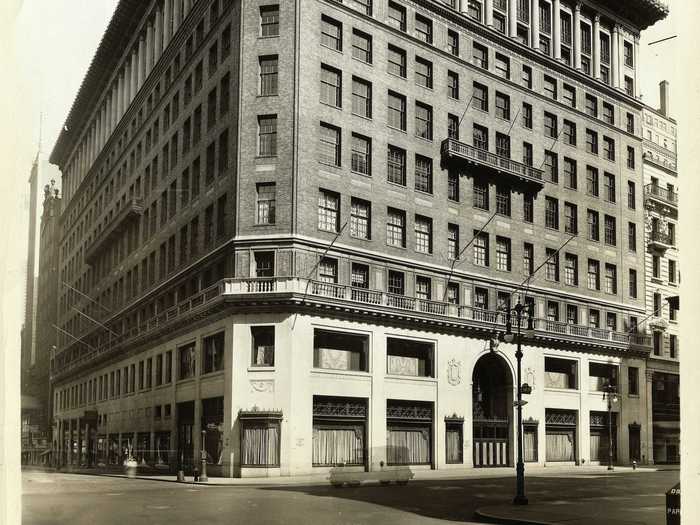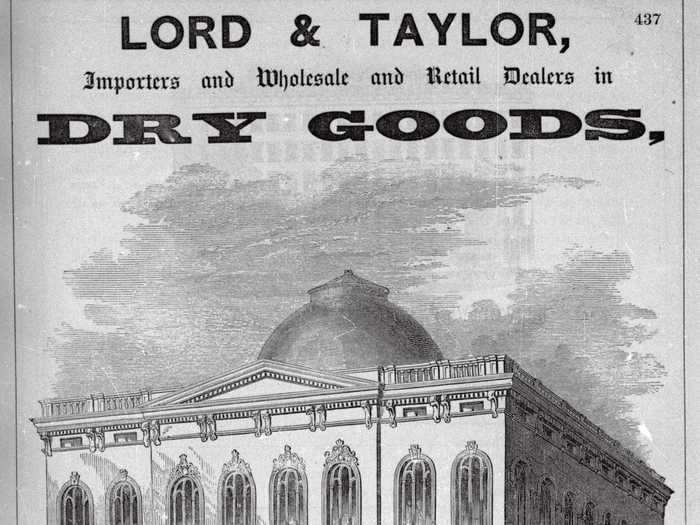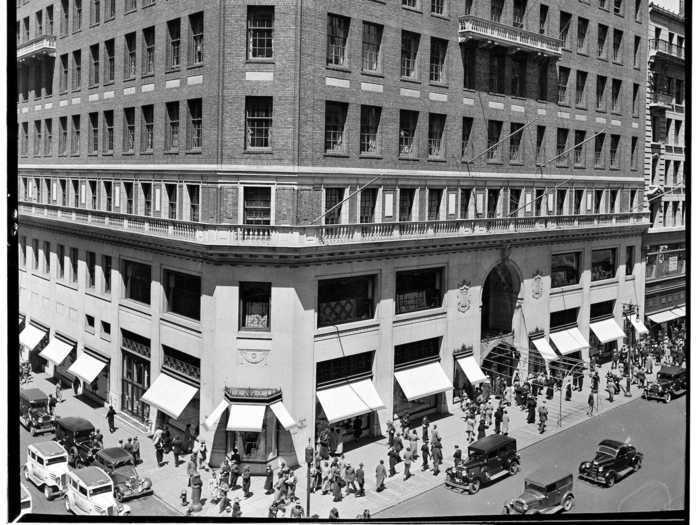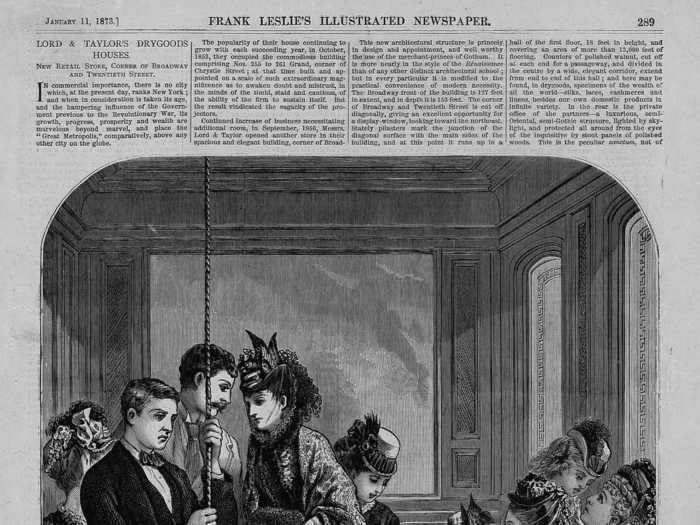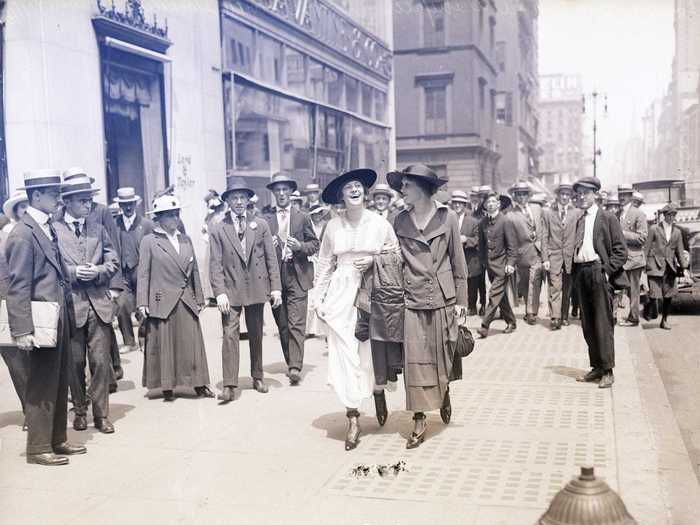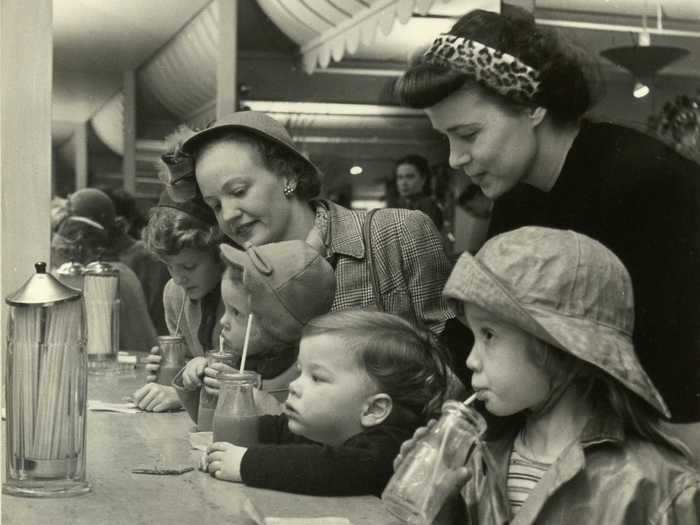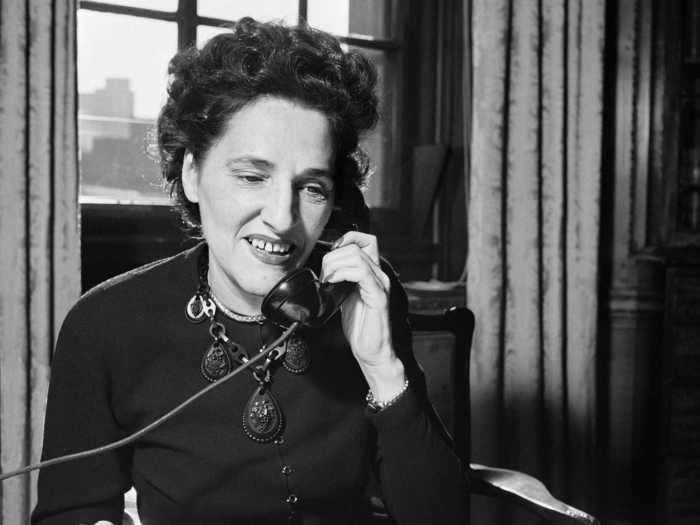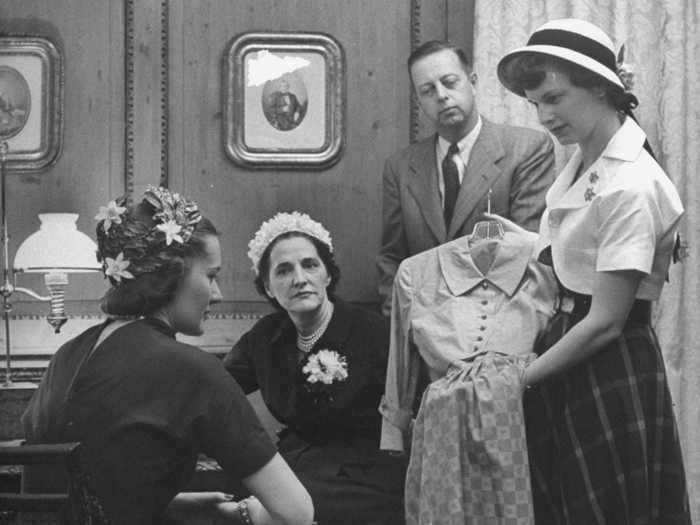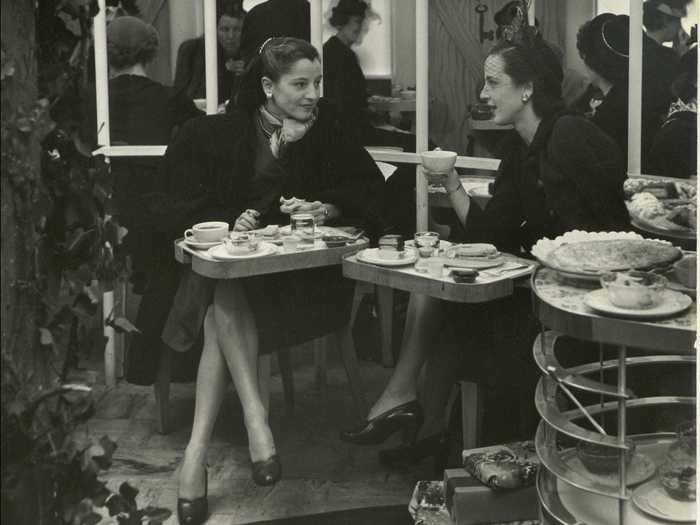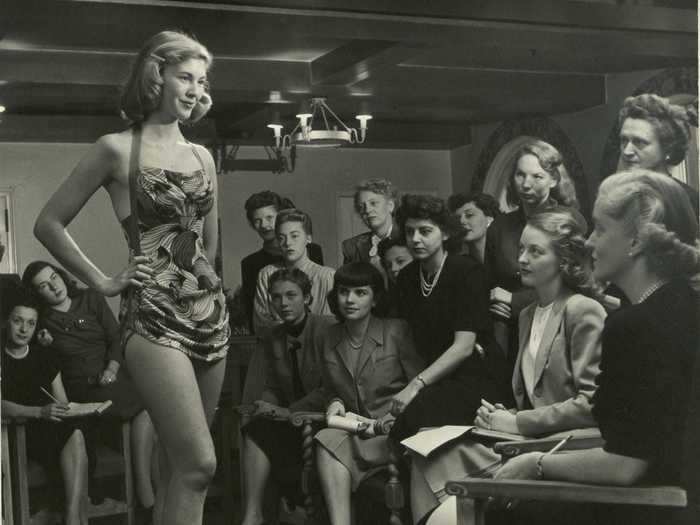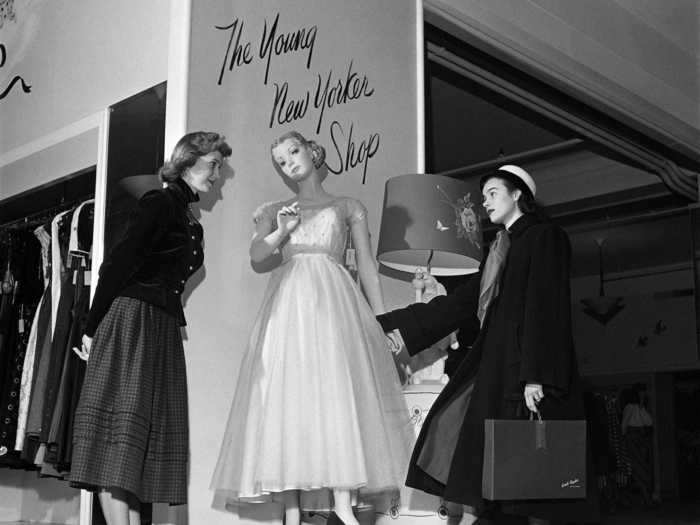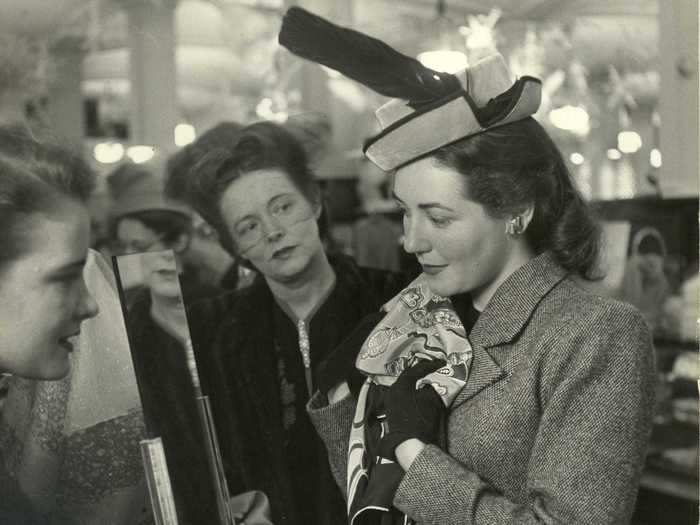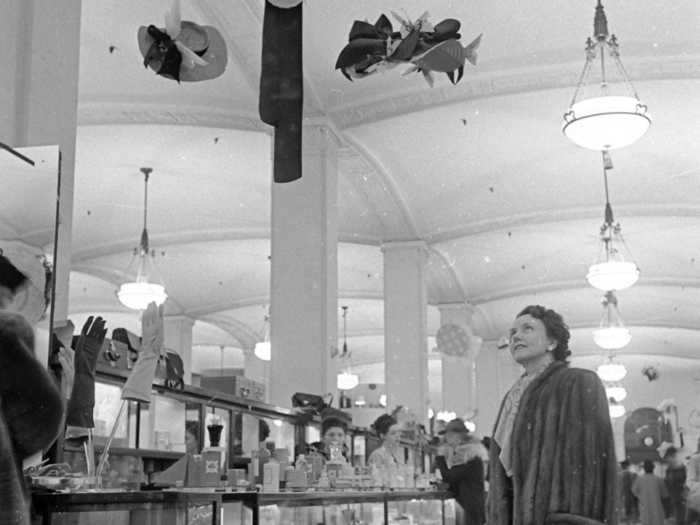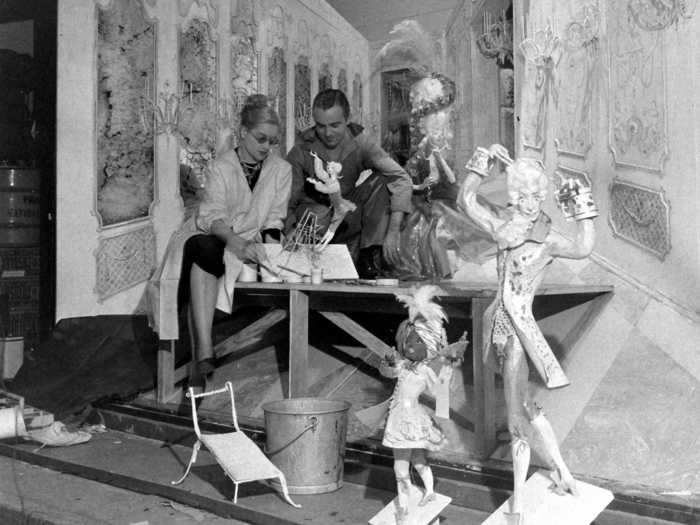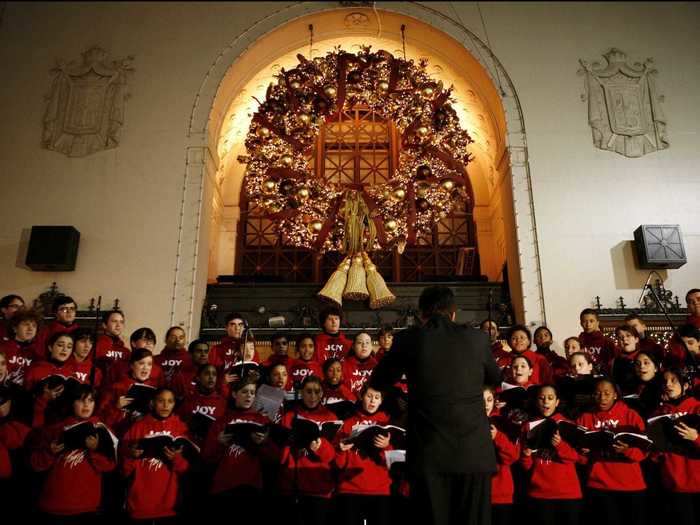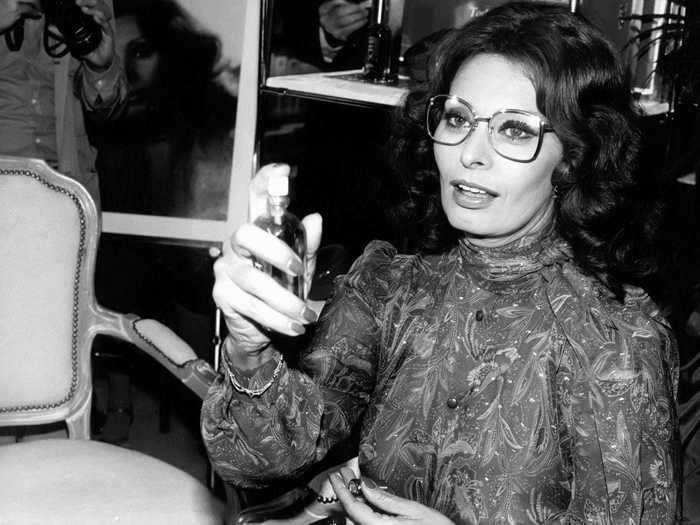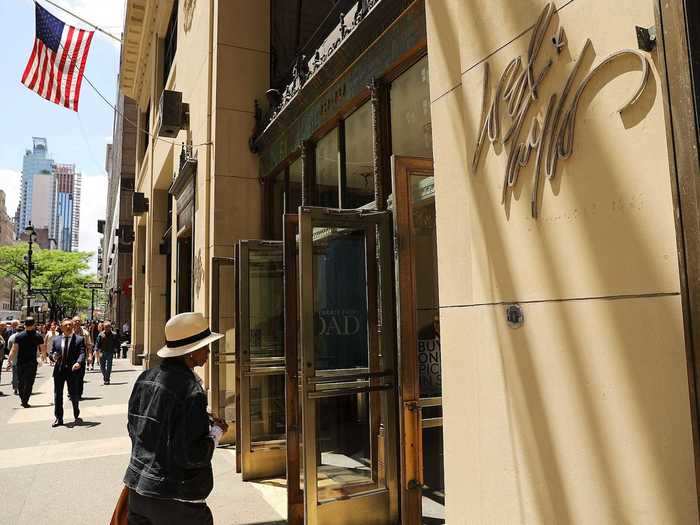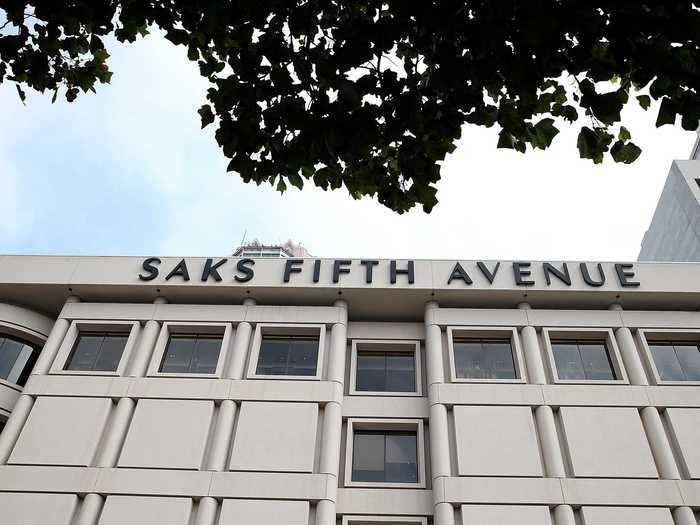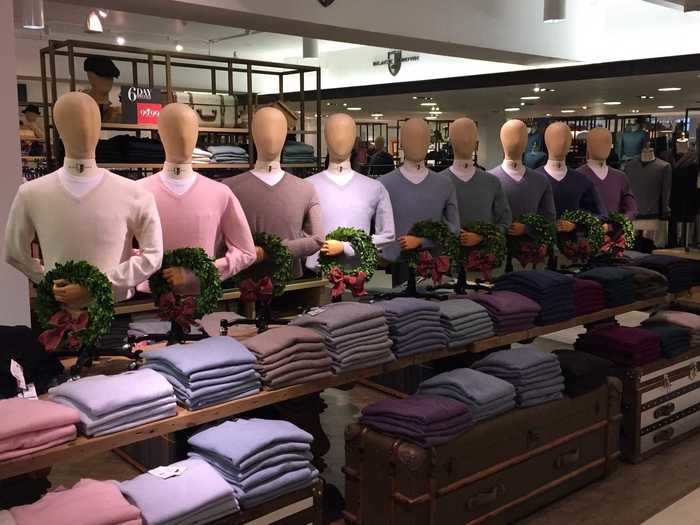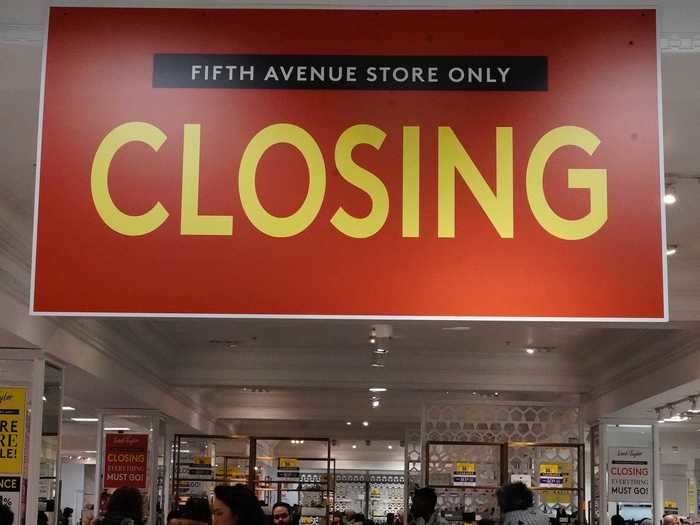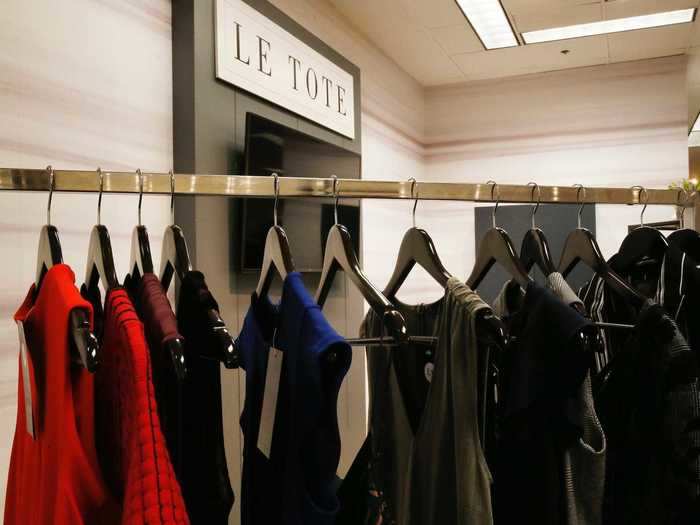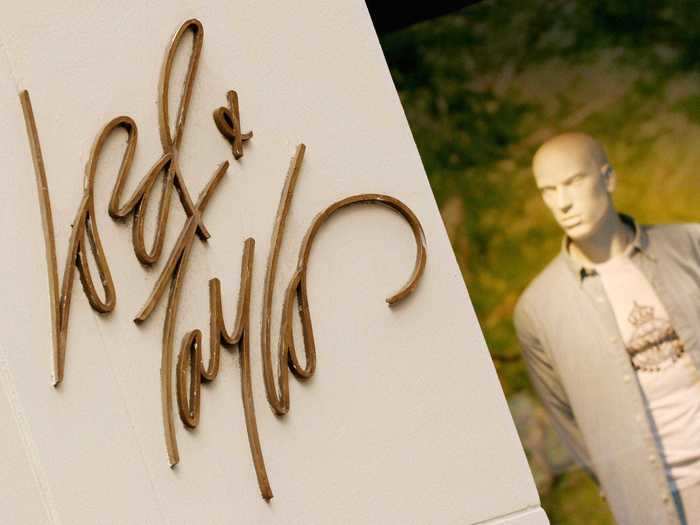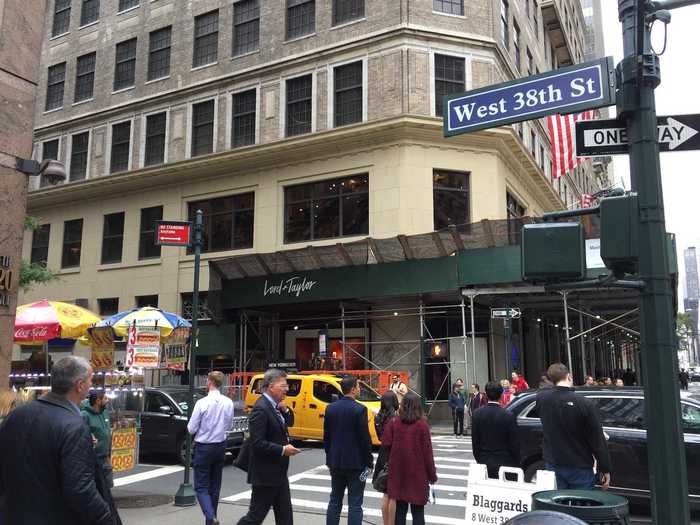New Yorkers walk past the Lord & Taylor flagship store in 1935.MCNY/Gottscho-Schleisner/Getty Images - The nearly 200-year-old Lord & Taylor announced on Monday that it is filing for Chapter 11 bankruptcy protection, joining JCPenney and Neiman Marcus as the latest victim of the coronavirus outbreak.
- In a post published on its website, Lord & Taylor wrote that it is looking for a new owner. The subscription clothing company Le Tote acquired the company in 2019. Le Tote also filed for bankruptcy on Monday.
- As one of the oldest department stores in America, Lord & Taylor has spent almost two centuries as a beacon of high-fashion and iconic part of New York City's culture. We took a closer look at the rise and fall of the company over the years.
Not even Lord & Taylor — one of the oldest and most beloved department stores in America — seems to be able to stand the test of the coronavirus.
The luxury department store announced on Monday that it is filing for Chapter 11 bankruptcy protection, joining peers like JCPenney and Neiman Marcus as the latest victim of the global pandemic and the ongoing retail apocalypse. In a post shared on its company website, Lord & Taylor announced that is in search of a new owner after it was acquired by the subscription clothing company Le Tote in August 2019. Le Tote also filed for bankruptcy on Monday.
"Today, we announced our search for a new owner who believes in our legacy and values," the post states. "This strategy is part of our fierce commitment to preserve a nearly 200-year-old brand that has served local communities and loyal customers for generations."
Despite its uncertain future, for nearly two centuries Lord & Taylor has served as a go-to retail destination and iconic part of New York City culture. Founded as a dry goods store in 1826, the company expanded to become one of the most prominent retailers in the country and an arbiter of high style. It also broke barriers by becoming the first major retailer led by a female president, inspiring a history of female leadership that set the brand apart in a largely male-dominated industry.
We took a look at Lord & Taylor's rise to retail powerhouse and its recent decline and uncertain future.
Lord & Taylor was founded in 1826 by English immigrants Samuel Lord and George Washington Taylor.
An early Lord & Taylor's store location on Fifth Avenue and 38th Street.
George Rinhart/Corbis via Getty Images
The store started as a dry goods store on the Lower East Side of Manhattan.
An advertisement for Lord & Taylor published in 1854.
Getty Images
In its early years, Lord & Taylor swiftly grew in popularity, and the store began manufacturing its own merchandise.
As Lord & Taylor began to expand, it moved to various locations around the city, including Broadway and 20th Street in 1900.
A newspaper ad announcing the newly reopened Lord & Taylor store in 1900.
CORBIS/Corbis via Getty Images
Lord & Taylor officially went public in 1904. By 1910, it had become part of United Dry Goods Company, before joining a chain of independent stores called the Associated Dry Goods Company in 1916.
Shoppers walk by Lord & Taylor in 1915.
Getty Images
In 1914, Lord & Taylor opened its iconic Fifth Avenue flagship store.
New Yorkers walk past the Lord & Taylor flagship store in 1935.
MCNY/Gottscho-Schleisner/Getty Images
The Fifth Avenue store became a beacon of style and high-fashion in New York City and offered a slew of services, such as a women's "leg bar" that opened in 1943.
Dana Jenney and Betty McLaughlen visit the newly opened "leg bar" in 1943 where women went to get a treatment known as "stockings out of the bottle."
Getty Images
With its array of eateries and entertainment, it was also a destination for the entire family.
Children drinking milk in Lord & Taylor in New York in 1946.
Nina Leen/The LIFE Picture Collection via Getty Images
In 1945, Lord & Taylor made history when it appointed Dorothy Shaver as president, the first woman to run a major department store.
Dorothy Shaver at her desk in April 1946 in New York City.
ERIC SCHWAB/AFP via Getty Images
Shaver is widely credited for her work of promoting American designers, launching personal shopping, and expanding the store's footprint across the US.
Thanks in large part to Shaver, Lord & Taylor elevated its status even further as a place to see and be seen.
Two women sip tea at the Bird Cage tea room at Lord & Taylor in the 1940s.
Nina Leen/The LIFE Picture Collection via Getty Images
By 1950, Lord & Taylor had become a bonafide fashion destination ...
A model showcases her outfit during Lord & Taylor event in 1946.
Nina Leen/The LIFE Picture Collection via Getty Images
... and a major part of New York City culture.
Shoppers came from near and far to get the Lord & Taylor treatment.
By the mid-1900s, Lord & Taylor began to evolve its visual style, including experimenting with whimsical displays like these hats suspended in the air.
A woman looking at spring hat decorations at Lord & Taylor in 1947.
Ralph Morse/The LIFE Picture Collection via Getty Images
Lord & Taylor also began to evolve certain forms of marketing like its window display strategy, which in the coming years would be an integral part of the store's identity.
Employees work on a window display for Lord & Taylor in 1946.
Nina Leen/The LIFE Picture Collection via Getty Images
For decades afterward, Lord & Taylor's elaborate holiday window displays have been go-to destinations for tourists and locals alike in New York City.
Holiday windows at Lord & Taylor in 2011.
Rahav Segev/WireImage/Getty Images
For years, the window unveiling has been a major citywide event to mark the start of the holiday shopping season.
The Young People's Chorus of New York City perform at the Lord & Taylor's Christmas windows unveiling in 2006.
Amy Sussman/Getty Images
Executive leadership changes in the 1970s — including William J. Lippincott in the first half of the decade, followed by Joseph E. Brooks in the second half of the decade — prompted growth in new cities like Atlanta, Houston, and Dallas.
Mark Matousek/Business Insider
Over the next few decades, its star continued to grow, and Lord & Taylor brought on several celebrity partners, including Sophia Lauren who launched a perfume with the department store in 1980.
Sophia Loren presents 'Sophia' at Lord & Taylor on September 25, 1980.
Images Press/IMAGES/Getty Images
In the following years, Lord & Taylor continued to establish itself as a major part of New York City's identity, launching special collections for major Broadway plays like "Kinky Boots" and hosting several glamorous events at its store.
Actor Billy Porter, musician Cyndi Lauper, Writer Harvey Fierstein and actor Stark Sands attend the Celebration of Broadway's New Hit "Kinky Boots" at Lord & Taylor in 2013.
Jemal Countess/WireImage/Getty Images
In 1986, Lord & Taylor was acquired by May Department Stores. As part of the acquisition, many of May's existing upscale retailers were converted to Lord & Taylor stores.
However, the start of the new millennium marked a series of ownership shakeups and high-profile challenges for the department store, including the death of a Frederick Finley, a shopper at a Lord & Taylor store in Michigan who lost consciousness after security guards held him in a chokehold after he was accused of shoplifting.
A rally against the death of Frederick Finley outside of a Lord & Taylor store in Dearborn, Michigan in 2000.
Bill Pugliano/Liaison/Getty Images
In 2005, Federated Department Stores — now known as Macy's Inc. — took control of Lord & Taylor as part of the May Department Stores acquisition. At the time, Federated CEO Terry J. Lundgren said the plan was to imminently sell off the Lord & Taylor brand.
Then-CEO of Federated Department Stores, Terry Lundgren.
STAN HONDA/AFP via Getty Images
True to Lundgren's word, Lord & Taylor was acquired by the NRDC Equity Partners in 2006. In 2008, NRDC purchased Hudson's Bay Company — which also owned Saks Fifth Avenue — and positioned Lord & Taylor under HBC.
Getty Images
Lord & Taylor remained part of Hudson's Bay Company for over a decade, during which the store continue to struggle against shifting consumer sentiments and the retail apocalypse.
Mark Matousek/Business Insider
Its woes worsened when in 2018, Lord & Taylor was part of a cybersecurity attack against HBC which compromised the personal information of both Lord & Taylor and Saks Fifth Avenue shoppers.
Mark Matousek/Business Insider
In 2019, Lord & Taylor announced it was permanently closing its iconic Fifth Avenue flagship store location, after first selling the historic building to WeWork in 2017,
Business Insider/Jessica Tyler
Later that year, rumors began to swirl that Amazon was eyeing purchasing part of the building now owned by WeWork to set up office space.
Lord & Taylor's flagship store closing sale
Carlo Allegri/Reuters
In August 2019, Lord & Taylor was acquired by the subscription clothing company Le Tote for $75 million, a deal that analysts and retail experts found unexpected and unprecedented.
In April 2020, amid financial strain from the coronavirus pandemic and speculation of a possible bankruptcy filing, Lord & Taylor quietly deleted its Instagram and Facebook pages.
Business Insider/Jessica Tyler
A spokesperson for Lord & Taylor's parent company Le Tote told Business Insider at the time that "the company is working through various options at this time and is declining to comment."
On August 3, 2020, Lord & Taylor officially filed for Chapter 11 bankruptcy protection, joining department stores JCPenney and Neiman Marcus in falling pray to coronavirus-related strife.
Business Insider/Jessica Tyler
According to an announcement posted on its website, Lord & Taylor is seeking a new owner "who believes in legacy and values." Le Tote also filed for bankruptcy.
Mark Lennihan / AP Images
As part of the bankruptcy announcement, Lord & Taylor is reportedly preparing to liquidate its 38 remaining stores and may close them permanently.
Mark Matousek/Business Insider

